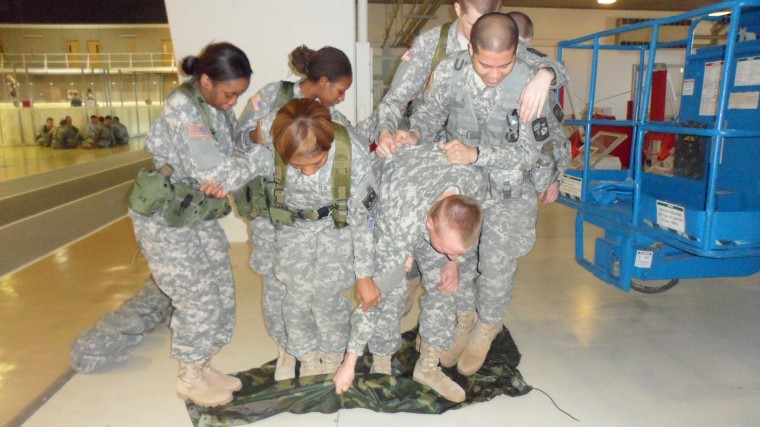ROTC leadership labs build cooperation
February 19, 2012
Guiding your classmate to safety after a grenade has left them blind is not part of a typical day for most college students.
However, NIU’s ROTC program has students simulating these and other situations every Thursday.
Sgt. 1st Class Frederick Harris, an instructor at NIU, said leadership labs aim to build cooperation through group work.
“They build teamwork with the guys,” said Harris. “They’re given a task, kind of like a puzzle, and they’ve got to figure out how to complete it.”
Every week, the challenges change in order to reflect a different goal.
“Last week we had weapons familiarization so they had to mess with M240 machine guns,” Harris said. “They also did an ‘enter and clear a room’ exercise. But every week we try and do something different.”
Harris estimated there are about 90 cadets in the program, including 12 females.
“Anyone can join, regardless of gender,” Harris said. “We have two females on the rifle team. There are certain standards you have to meet, like maintaining a good GPA and getting a certain score on the Army physical fitness test. But if you can do it, that’s all that matters; you can join.”
Students range from freshmen to seniors and are referred to as MS1 to MS4, respectively. The cadets are divided into smaller squads, each with a leader who gives out missions and explains the goal of the exercise.
This week’s mission: communication and teamwork.
Karl Woodham, cadet major and graduate student, oversaw sophomore cadets while they attempted to flip over a life raft.
In the simulation, soldiers are divided into two teams. Each team is given a life raft, and all members have to keep both feet on the raft at all time. Cadets are told that due to a leakage, they must turn the raft over without “falling into the water.”
The exercise required the cadets to collectively jump and be in constant communication with one another.
Although fun, Woodham said this task is only the beginning for these cadets.
“This one isn’t as challenging,” Woodham said. “Some of the other ones actually require you to think a little bit more. This is really more to get them to work together.”
In another scenario, freshmen and sophomores simulate being blinded on the battlefield.
The cadets are told that everyone in their squad has been blinded by a grenade, except for the soldier on the carrier. To complete the task successfully, the cadet who can see must use directional language to guide their fellow soldiers back to safety without hitting any mines, designated by orange cones.
Harris said that this test is essential for developing communication skills and building group trust.
“The person being carried is the only one who can give out instructions,” Harris said. “It’s a team building experience because the guy being carried has to coordinate with the team and tell them what to do. The fate of the whole group relies on that one person’s ability to cooperate.”
Command Sgt. Maj. Randa Hamadeh, senior nursing major, watched as beginner-level cadets simulated crossing over dangerous territories, like water or a fire.
“They started out with three boards and they have to stay on these boxes,” Hamadeh said. “They have to get everyone from this side over to that side within 12 minutes and 30 seconds; it’s kind of a race.”
While the first team works to complete the task, the second group waits outside the court.
Hamadeh said that although the cadets focus on building team-centered skills, competition and leadership are still important components of the exercise.
“It’s to see who has the best teamwork, the best communication,” Hamadeh said. “Sometimes we see that the people in charge take kind of a step down and let other people control, so this is really a good situation to try and see if that does happen and how we can correct that. Because when someone is in charge, they need to be in charge, and that’s how we kind of determine their leadership abilities at this point.”



